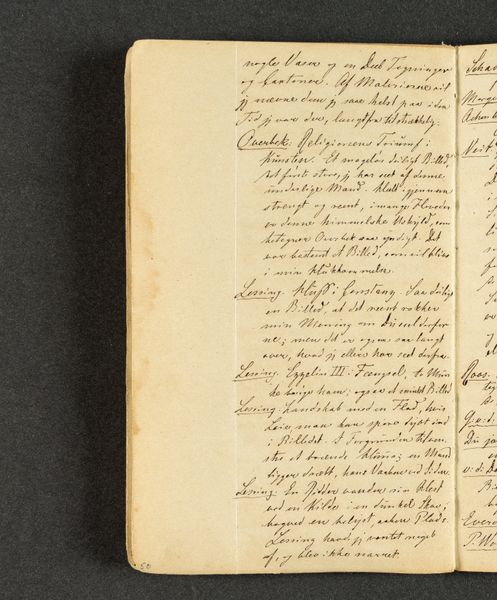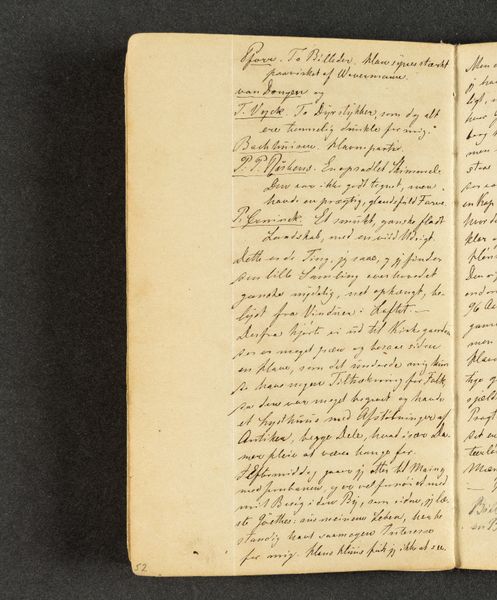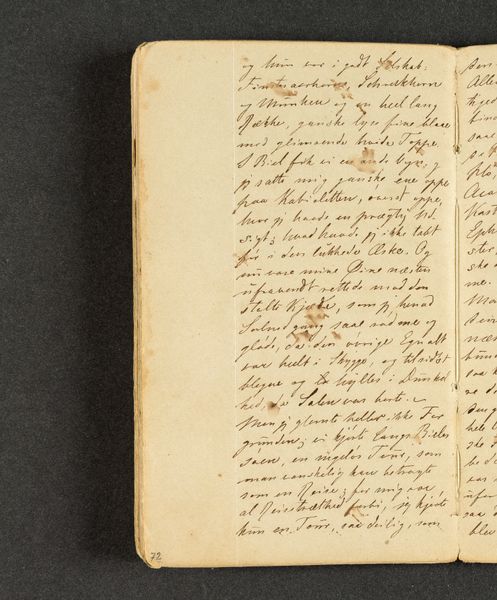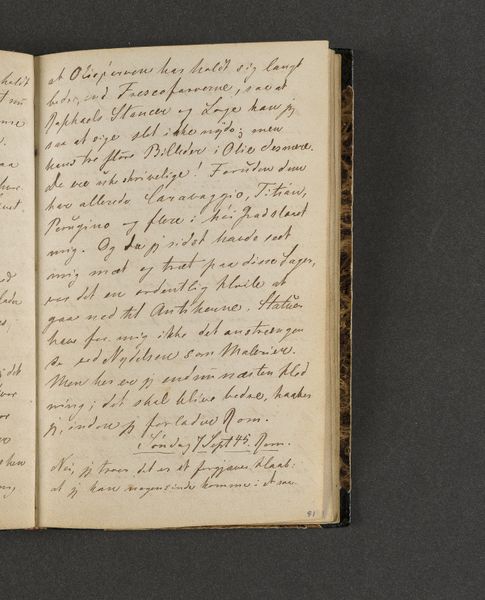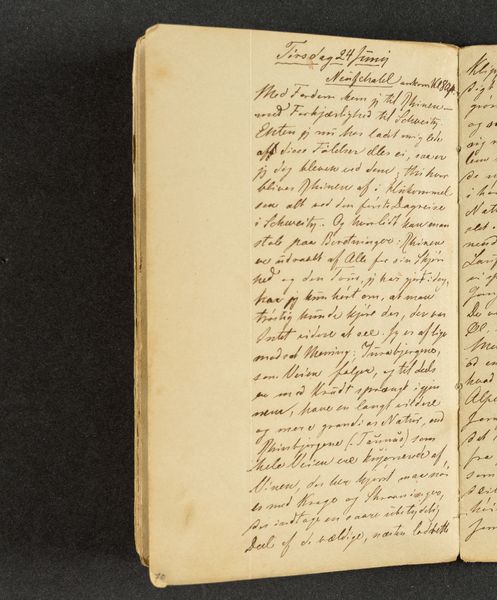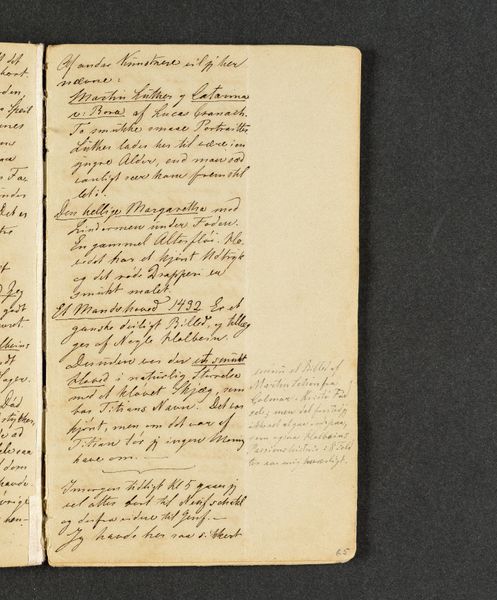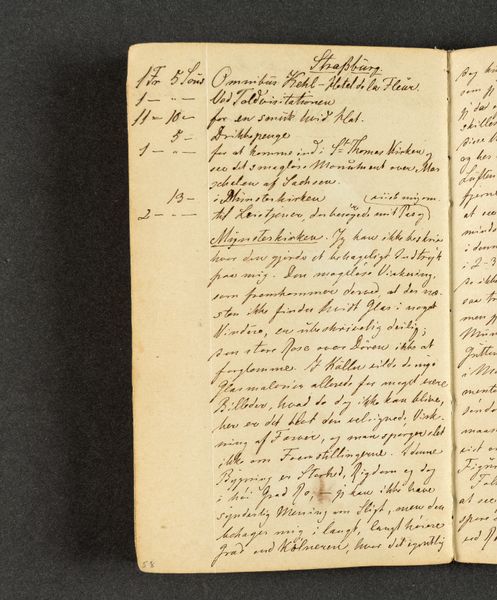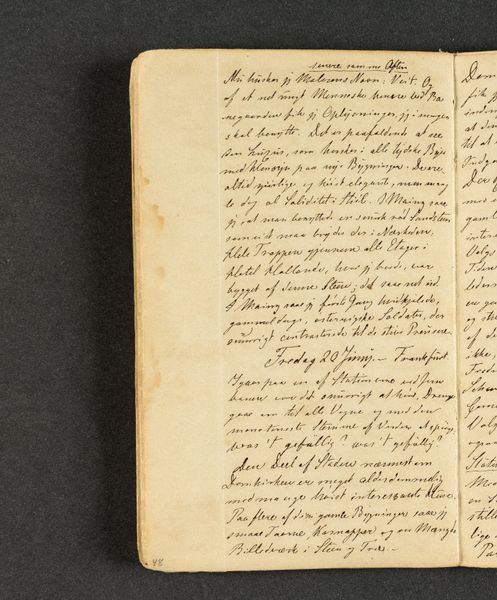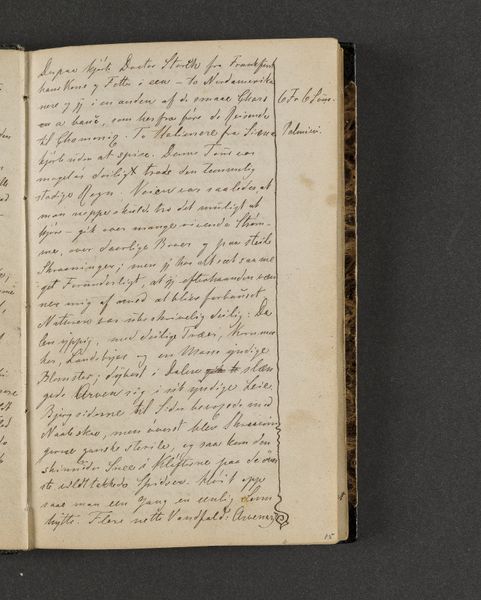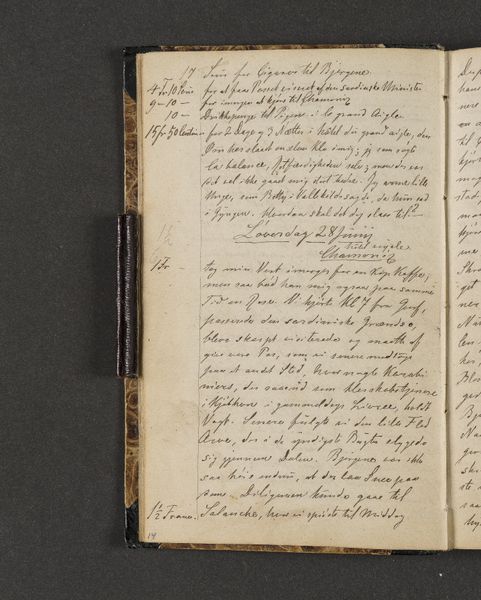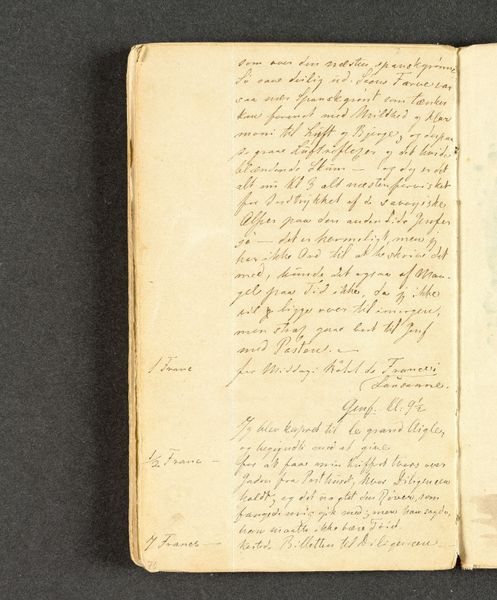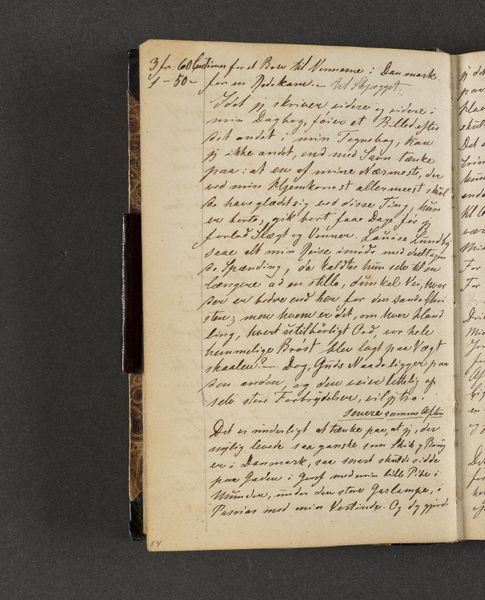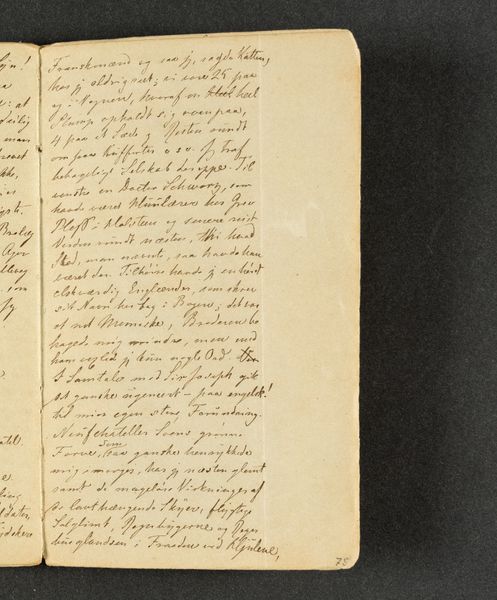
drawing, paper, ink
#
drawing
#
paper
#
ink
#
journal
#
romanticism
Dimensions: 163 mm (height) x 98 mm (width) (bladmaal)
This page from Johan Thomas Lundbye's travel journal, created sometime in the early 19th century, presents us with a fascinating tableau of daily life seen through the lens of language. Script, or handwriting, is itself a potent symbol, capable of conveying a wide range of meanings, from the mundane to the deeply profound. We see lists, dates, and observations meticulously recorded. Lundbye documented daily expenses and events, using this journal to record his personal experiences and encounters. Consider how writing, as a motif, has appeared across cultures and eras. From ancient Egyptian hieroglyphs to medieval illuminated manuscripts, it has been used to document, communicate, and preserve knowledge. Think of the written word as a way to capture thoughts and experiences, giving them a life beyond the present moment. The very act of writing is deeply psychological. It allows us to give shape to our inner thoughts and project them into the external world. This process can evoke intense feelings, engaging with our subconscious on a deep, and often deeply personal, level. Ultimately, Lundbye's journal reminds us that handwriting is more than just a means of communication. It is a powerful cultural symbol that reflects the ever-evolving relationship between language, memory, and personal experience.
Comments
No comments
Be the first to comment and join the conversation on the ultimate creative platform.
